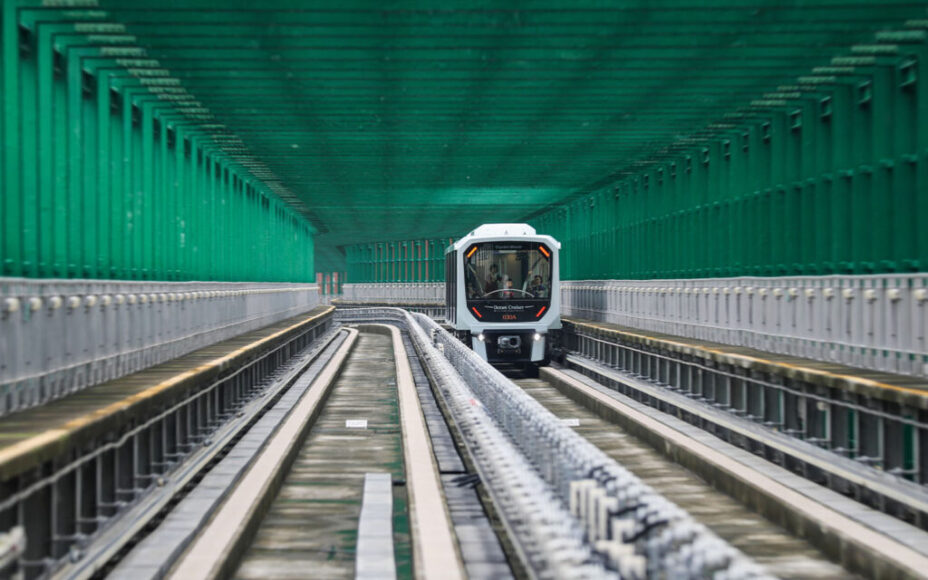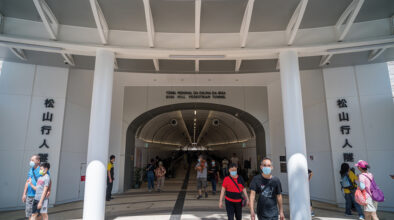Travel between Macao and the mainland island of Hengqin has changed dramatically in the past few months. It’s now possible to move between the two areas by rail, thanks to the latest addition to Macao’s fast-growing Light Rail Transit (LRT) system, the Hengqin Line. Inaugurated on 2 December, the new line cuts journeys from the Special Administrative Region (SAR) to Hengqin Port down to just 30 minutes – about half the time it takes with a bus transfer from the Lotus Line in Taipa.
Comprising just two stations, a mere 2.2 kilometres in length, the Hengqin Line is small in stature. But it’s an impressive feat of engineering nonetheless. After trundling overland from Lotus Station, the train dives beneath the Shizimen Waterway via a 900-metre-long tunnel before arriving at Hengqin Station.
The new railway’s most important distinction is symbolic, however. At its opening ceremony, the head of the Macao Light Rapid Transit Corporation, Ho Cheong Kei, described the Hengqin Line as “of great significance” because it physically connects the SAR to the mainland. More than just a transit link, it stands as an important milestone in Macao’s ongoing journey toward deeper integration with its motherland.
Benefiting the people
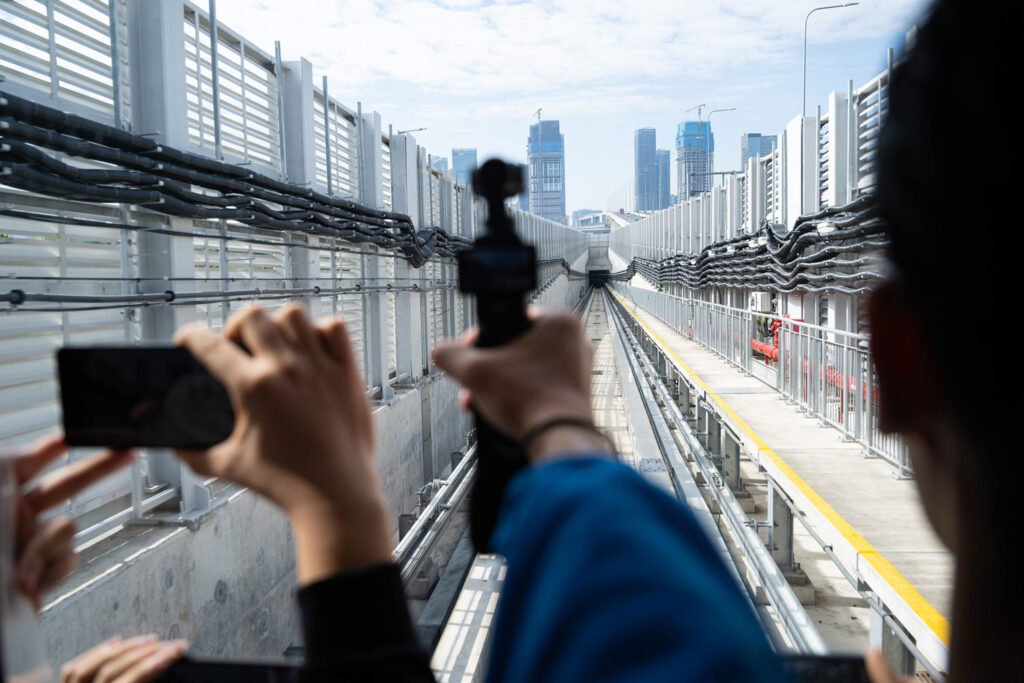
Henry Lei, vice chairman of the Macau Economic Association and an associate professor in business economics at the University of Macau (UM), praises the new line’s practicality. According to him, local uni students are already taking advantage of the convenient transport option by relocating to Hengqin, where accommodation tends to be more affordable. The LRT makes commuting to Macao-based universities a breeze, he says.
These students’ quick embrace of lifestyle opportunities offered by the Hengqin Line could inspire other Macao residents to do the same, Lei tells Macao magazine. “[The line] could be an extra selling point to attract more people to move and settle in Hengqin, especially those who had hesitations before due to their concerns over transport convenience,” he notes.
Of course, the new LRT is not only for commuters. It’s also a game changer for people travelling to and from Macao, Hengqin, the broader mainland and even countries overseas. Considering the Central Government’s recent decision to start granting multi-entry Macao visas to Hengqin and Zhuhai residents, the Hengqin Line is likely facilitating a rise in inbound tourism: good news for the economy. These one-year visas allow Zhuhai residents to make once-weekly trips to the SAR for up to seven days, while Hengqin residents can travel to the city as often as they wish, for stays of up to seven days.
In terms of outbound tourism, the Hengqin Line is a handy way for Macao residents to reach Zhuhai Airport. This desirable aviation hub offers competitively priced flights to dozens of mainland destinations, some of which cannot be reached from the Macau International Airport (MIA). Lei himself plans to make use of the new LRT for his next holiday. He says he’ll walk from his home to the nearest station (Jockey Club), take the Taipa Line to Lotus Station, transfer to the new line and disembark at Hengqin Port. From the mainland side of the border, he can take either the interconnecting high-speed rail or a taxi direct to Zhuhai Airport.
The reverse is true for Zhuhai residents. While their local airport is well-connected domestically, Macao’s offers international routes. Lei expects to see mainlanders start using the LRT to reach MIA, from where they can jet off to Southeast Asian countries like Thailand, Singapore and Malaysia. This is how the Hengqin Line will help Macao enhance its reputation as a travel hub, he says.
The one-hour living circle
The Hengqin Line is one of many interconnecting infrastructure projects that have been taking place in Macao and the broader GBA in recent years. It’s a cog in what’s often referred to as the ‘one-hour living circle’, a cross-border initiative geared towards making it possible to travel between key regional cities, including Macao and Hong Kong, within a 60-minute time frame.
The Hong Kong-Zhuhai-Macao Bridge (HZMB) is another prime example. Stretching 55 kilometres across the Pearl River Estuary, the HZMB is the longest sea crossing in the world. Thanks to it, driving between the two SARs takes just 40 minutes. Another impressive project of a similar vein is the 24-kilometre Shenzhen-Zhongshan Link, which opened to traffic in June 2024. Much like the HZMB, this sea crossing – consisting of a pair of bridges, an underwater tunnel and two artificial islands – dramatically cuts travel time between Shenzhen and Zhongshan from the original two hours to just 30 minutes.
Integration is a go
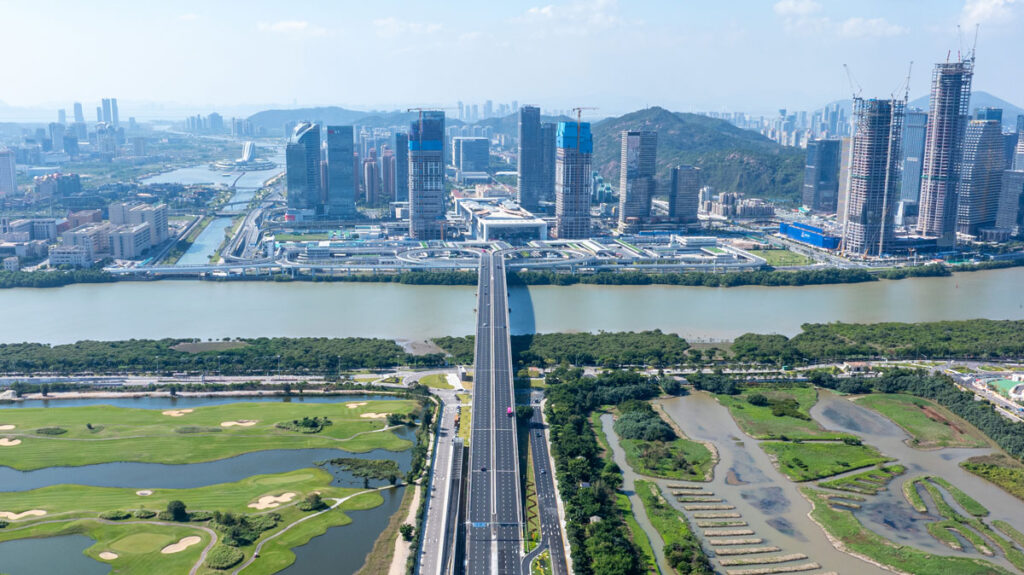
Macao-mainland integration has been ramping up in recent years. It can feel like new cross-border initiatives relating to the Guangdong-Macao Intensive Cooperation Zone are announced every week, most to do with tiny Macao expanding beyond its borders. The Cooperation Zone, located in Hengqin, was developed to give the city’s people and businesses the space they need to continue to flourish.
For example, the Macau International Airport Company (CAM) recently announced its intention to build and operate an upstream cargo terminal in Hengqin. Speaking at the project’s signing ceremony in December, CAM’s chairman, Chan Weng Hong, described the new terminal as “enhancing Macao’s aviation logistics capabilities and actively promoting economic development.”
Another major project on the horizon is UM’s new campus in the Intensite Cooperation Zone in Hengqin, expected to be ready by August 2028. The facility will be able to accommodate 10,000 students across UM’s medicine, information science and technology, design, and engineering faculties.
The SAR government is also encouraging Macao residents to move into purpose-built housing developments in Hengqin, like Macau New Neighbourhood (MNN). Completed in 2023, MNN comprises more than 4,000 residential units. Given the economic opportunities present in Hengqin, and the island’s ever-increasing integration with Macao’s public services, a substantial number of SAR residents have already made the move to MNN.
A more recent venture is the Cai Tang Yuan Macao government-subsidised rental housing project, construction of which kicked off last December. This development will eventually consist of about 3,000 units, as well as a range of commercial and public facilities.
To ensure projects like these work, there are solid government policies supporting cross-border movements behind them. The Central Government and relevant local authorities have been implementing a number of measures that make it easier for people, goods and even pets to travel between Macao and Hengqin.
While Macao and the mainland are separate customs regions under the ‘One Country, Two Systems’ policy, a novel two-tier customs system was introduced in the Cooperation Zone last March.
The first tier, on the Macao-Hengqin border, allows for tax-free trade within the zone. The second tier is between Hengqin and the rest of the mainland; goods crossing this are still subject to the usual tariffs and custom duties.
The future of Macao’s LRT
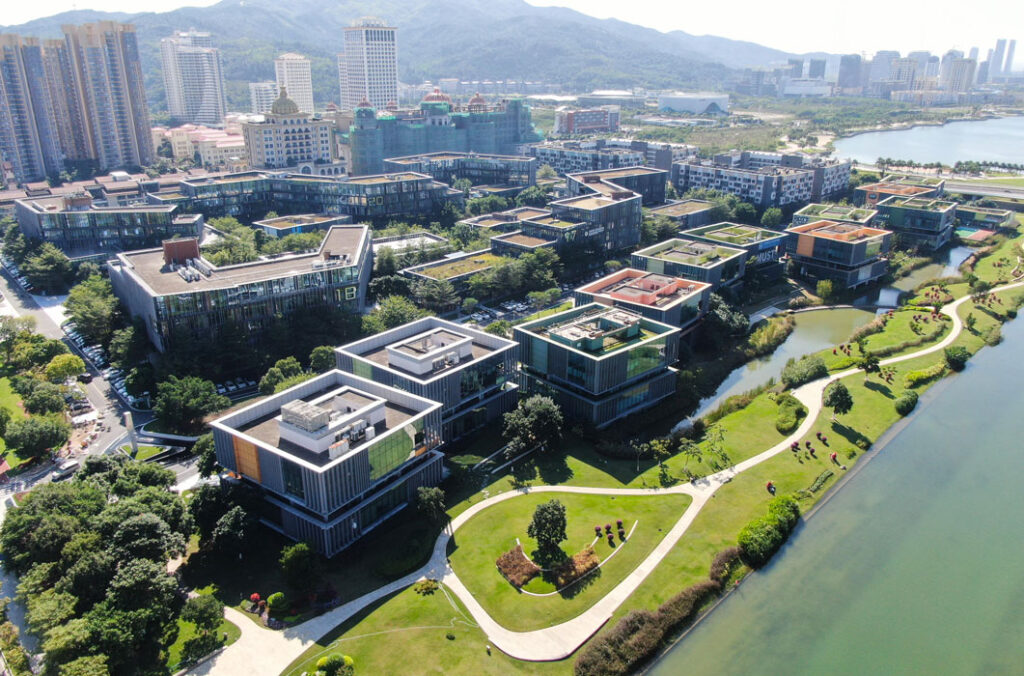
With so many cross-border initiatives underway, it’s a huge help to have the Hengqin Line up and running. But there’s more to come from Macao’s LRT system. In fact, the next new line scheduled to open will also boost the flow of people to and from the mainland. This is the East Line, a 7.7-kilometre railway track running from the Border Gate at the very top of Macao Peninsula, down through New Urban Zones A and E – which are located adjacent to Macao Peninsula’s HZMB port and in Taipa’s northeast, near the airport, respectively.
The East Line is already anticipated to be another game changer for Macao. The busy Border Gate is the main throughfare between the SAR and Zhuhai, making this track a convenient way for visiting mainlanders to reach Macao’s airport and the Taipa Ferry Terminal – as well as the popular entertainment zone known as Cotai.
The East Line, expected to be operational in 2029, may be accompanied by an additional station at Qingmao Port. This port of entry that opened in 2021, to relieve some of the pressure on the Border Gate. As Lei puts it, “we cannot say the LRT is fully developed without the connection of this mass railway system to the Border Gate.”
